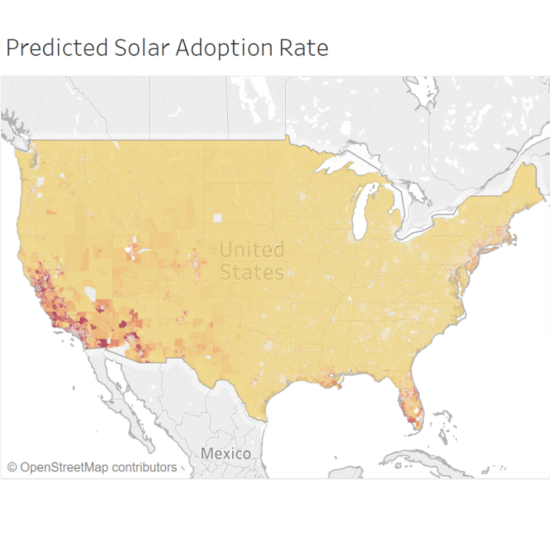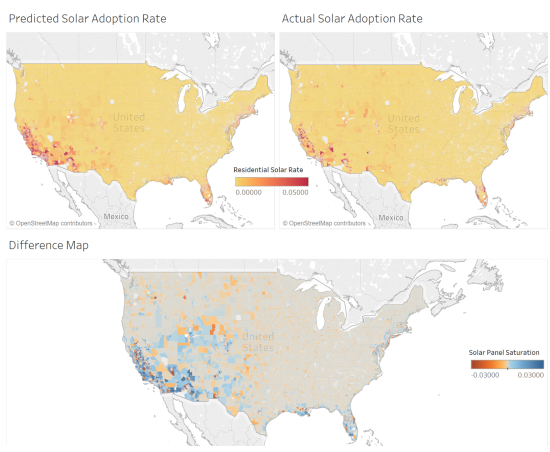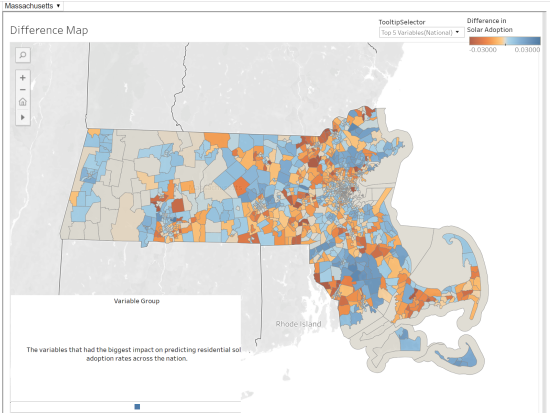Predicting Solar Panel Adoption
Our interactive geospatial visual tool analyzes factors contributing to distributed residential solar panel adoption: http://people.ischool.berkeley.edu/~hudsonga/
Mitigating Climate Change
Distributed renewable electricity generation mitigates climate change impact by reducing carbon emissions, increases diversity and resilience in electricity production, and reduces demand on electrical grids. However, distributed electricity generation is more complex to integrate into the grid than traditional centralized energy production and requires understanding of complex customer adoption trends. Using the most recent U.S. solar panel identification database from Stanford's DeepSolar team, our work takes a step toward this latter goal of understanding the factors that drive customer adoption of distributed residential solar panel systems.
Interactive Visual Tool
Our interactive visual tool focusses on identifying census tracts in the continental U.S. that have high values of predictive factors driving residential solar panel adoption, but are, on the contrary, under-saturated with residential solar panels relative to our predictions. Our tool includes general predictions for the continental United States and state maps allow exploration of over 100 potentially predictive factors for every census tract in that state.
Model
We created a random forest model with extensive feature engineering, achieving a cross-validated R squared score of 0.744, a slight improvement on a similar model created by Stanford's DeepSolar team, who created the solar panel database. More information about our model, feature engineering and conclusions is available here: https://github.com/nwlevy/capstone_solarpanels/blob/master/FinalPresent…
Conclusions
Overall we found that local incentives are a higher driver of residential solar panel adoption than other economic factors as well as dry and sunny local weather. Our tool has the potential for improvement with more detailed data about local incentives and solar panel installation financial options and could be customized for more narrow focus on any particular variable, variable subset, state or geographic area.













